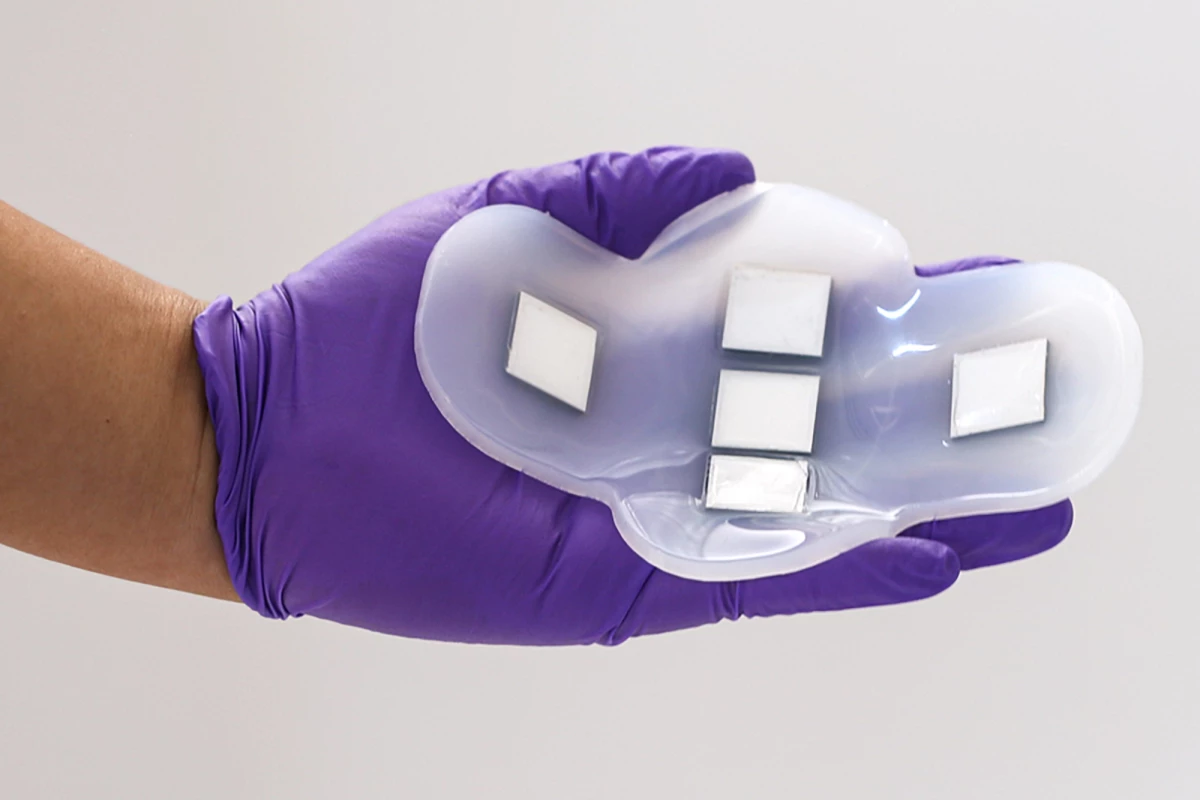Researchers at MIT have designed a wearable ultrasound patch that can image organs as well as a conventional ultrasound does, without the need for cold gel or an operator. While they used it to measure bladder fullness, the device could also be adapted to image other internal organs, providing a new way of monitoring for disease.
Ultrasound is widely used in clinical practice. The imaging technique is painless, non-invasive, does not use ionizing radiation, and provides images in real-time. However, currently, ultrasounds require the patient to lie on a table, the application of (usually cold) conductive gel, and an operator to work the transducer.
That might soon change thanks to MIT researchers, who’ve designed a wearable ultrasound, in the form of a patch, that does away with gel and the operator and can accurately image the bladder to determine how full it is. And the design is adaptable.
“This technology is versatile and can be used not only on the bladder but any deep tissue of the body,” said Canan Dagdeviren, the study’s corresponding author. “It’s a novel platform that can do identification and characterization of many of the diseases that we carry in our body.”
The researchers focused on a bladder ultrasound because they were partly inspired by Dagdeviren’s younger brother, who’d been diagnosed with kidney cancer a few years ago. Since having a kidney removed, he’d had difficulty fully emptying his bladder.
“Millions of people are suffering from bladder dysfunction and related diseases, and not surprisingly, bladder volume monitoring is an effective way to assess your kidney health and wellness,” Dagdeviren said.
Their conformable ultrasound bladder patch (cUSB-Patch) constitutes a flexible silicone rubber patch embedded with five ultrasound arrays made from a new piezoelectric material the researchers developed for the device. The novel material is a samarium/lanthanum-doped combination of lead magnesium niobate and lead titanate ceramics, Sm/La-PMN-PT.
The arrays are arranged in an X shape, providing a large field of view. In this case, the device was able to image the entire bladder, which is about 4.7 by 3.1 in (12 by 8 cm) when full. The patch is naturally sticky and adheres gently to the skin, so it’s easy to attach and detach. It can be more securely held in place by underwear or leggings.
The researchers tested the ability of the cUSB-Patch to measure bladder volume, using it on 20 patients aged 18 to 64 with a range of BMIs. Patients were first imaged with a full bladder, then a partially emptied bladder and a completely empty bladder. Images from the cUSB-Patch were comparable to those taken with a conventional ultrasound probe and worked on all patients, regardless of their BMI.
Because of the large field of view of the device, pressure did not need to be applied as it would with a conventional ultrasound transducer and gel wasn’t required. To view the images taken using the cUSB-Patch, the researchers connected their ultrasound arrays to the conventional ultrasound machine. They’re working on a portable device, about the size of a smartphone, that could be used to view the images.
The researchers hope to develop ultrasound devices that could be used to image other organs, such as the pancreas, liver, or ovaries. The location and depth of each organ would require an alteration of the frequency of the ultrasound signal, which would necessitate new piezoelectric materials.
“For whatever organ that we need to visualize, we go back to the first step, select the right materials, come up with the right device design, and then fabricate everything accordingly before testing the device and performing clinical trials,” said Dagdeviren.
The study was published in the journal Nature Electronics.
Source: MIT





